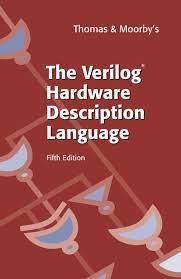The Verilog Hardware Description Language: A White Paper
Introduction
Verilog is a hardware description language (HDL) widely used in the design and verification of digital circuits. It provides a textual representation of hardware components, their interconnections, and their behavior. This white paper will delve into the key features, syntax, and applications of the Verilog language.
Key Features of Verilog
- Modularity: Verilog encourages a modular approach to design, allowing complex circuits to be decomposed into smaller, reusable components.
- Hierarchy: Verilog supports hierarchical design, enabling the creation of complex systems from simpler modules.
- Concurrent Execution: Verilog models the concurrent nature of hardware, where multiple operations can occur simultaneously.
- Behavioral and Structural Modeling: Verilog can be used to model hardware behavior at various levels of abstraction, from high-level behavioral descriptions to low-level structural representations.
- Simulation and Synthesis: Verilog designs can be simulated to verify their functionality and synthesized into hardware implementations.
Verilog Syntax and Constructs
- Modules: The basic building block in Verilog is the module, which encapsulates a piece of hardware.
- Ports: Modules communicate with each other through ports, which can be inputs, outputs, or inouts.
- Data Types: Verilog supports various data types, including integers, reals, logic values (0, 1, X, Z), and time values.
- Operators: Verilog provides a rich set of operators for arithmetic, logical, relational, and bitwise operations.
- Procedural Statements: Verilog includes procedural statements like always blocks and initial blocks to describe the behavior of sequential circuits.
- Structural Modeling: Structural modeling uses instances of modules and their connections to represent the physical structure of a circuit.
Verilog Applications
Verilog is used in a wide range of applications, including:
- Digital Circuit Design: Verilog is the primary language for designing integrated circuits (ICs) and other digital systems.
- Verification: Verilog is used to create test benches and simulations to verify the correctness of digital designs.
- FPGA and ASIC Design: Verilog is used to design field-programmable gate arrays (FPGAs) and application-specific integrated circuits (ASICs).
- System-on-Chip (SoC) Design: Verilog is used to design complex systems that integrate multiple components on a single chip.
Conclusion
Verilog is a powerful and versatile language for designing and verifying digital circuits. Its modularity, hierarchy, and support for concurrent execution make it well-suited for a wide range of applications. By mastering Verilog, engineers can create complex and efficient digital systems.
References
- IEEE Standard for Verilog Hardware Description Language
- Thomas Simon, "Verilog Digital Computer Design: A Practical Approach"
- Samir Palnitkar, "Verilog HDL: A Guide to Digital Design"
Note: This white paper provides a brief overview of Verilog. For a more in-depth understanding, it is recommended to consult the official Verilog standard and specialized textbooks.



